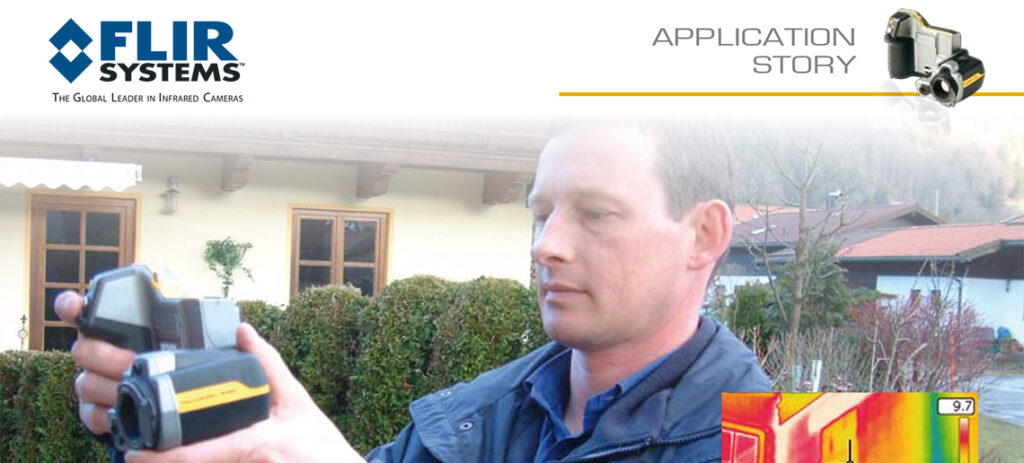Building insulation quality becomes a pressing issue as heating costs soar. An infrared camera for building applications and the expert’s eye can do a lot to save on energy.
“Building and floor leak inspections are our main applications,” says Günther Buchstaller, a master bricklayer and plasterer who has specialized in water damage assessment and thermographic inspection and analysis of residential buildings. Buchstaller is based in Ruhpolding, a resort in the Bavarian Alps, a region where the building substance of the houses is considered as very stable. But even there, the infrared camera discovers leaks and deficiencies that are becoming pricey: fuel oil prices have risen in Germany by 100% over the last five years. No wonder more and more house owners are calling Buchstaller for a thermographic inspection.
Infrared cameras show temperature differences over entire surfaces. The measurement of house façades and walls is based on the temperature differences of the house inside, outside and the wall structure. But much depends on the correct camera setting and, last but not least, the building expertise of the camera user.
Inspecting and Reporting
“Before every measurement of a building object, I set the reflected temperature parameter to get a temperature measurement that is as true as possible.” Buchstaller considers this more important than setting the degree of emissivity, the amount of heat radiation that is emitted by every object or subject. In addition to scanning in a proper way, the interpretation of the imagery requires a solid knowledge of local building techniques, materials and rules. Buchstaller uses the ThermaCAM Reporter software to provide his customers with a comprehensive report that includes imagery, description and an advice for removal of the fault. “I set the camera on a rainbow colour pallet, so that the customer can better see the temperature differences on the measured objects.”
In addition, the camera provides support in showing Buchstaller or his business partner Martin Gastager where not to drill when doing leak surveys or water damage assessments, an asset in a region where floor heating is common.

Buchstaller has chosen the FLIR B360 infrared camera : “The camera’s screen size is important, not only for our user comfort, but also for the customer who finds the technology quite impressive, the tiltable lens unit is very handy and the camera’s weight makes working very easy.”
Skyrocketing heating costs and an affordable technology are opening up new market and service perspectives for building professionals. Buchstaller says he expects to amortize his infrared camera within two years.
Acknowledgements to Bernd Duschek of FLIR products distributor TOPA GmbH (www.topa.de) and FLIR Systems Regional Sales Manager Sebastian Hinterseer for providing contact and support.

